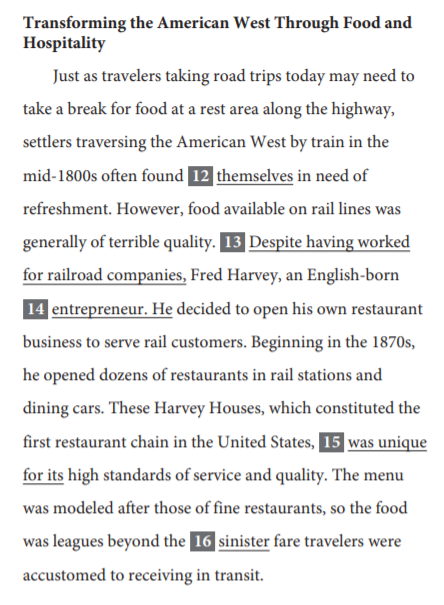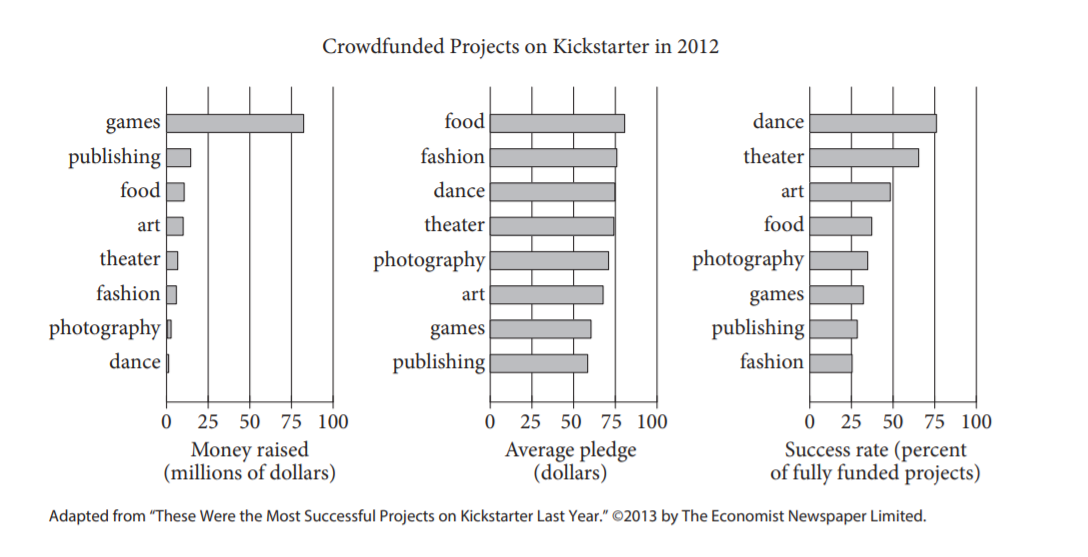<< Hide Menu
SAT Writing and Language: Analysis in History, Social Studies, and Science 💭
7 min read•june 18, 2024
Jessica Q.
TienDinh
Jessica Q.
TienDinh
👋🏻 Introduction
If you're a student preparing for the SAT and feeling a little overwhelmed by those daunting long passages in the writing & language section, fret not! We're here to turn those seemingly dull paragraphs into exciting tales that will make you want to dive right in. 🤗
The SAT Writing and Language section holds immense significance as it assesses your ability to comprehend, interpret, and critique a wide range of written passages. Within this domain, a special focus is given to analyzing texts from various fields, including the realms of history, social studies, and science. By developing a strong grasp of analytical skills in these subjects, you not only excel on the SAT but also cultivate a vital aptitude for critical thinking and understanding the world around us.
Alongside essential tips and strategies, we'll explore diverse examples, guiding you through the process of dissecting passages effectively. Our aim is to foster a deeper appreciation for these subjects while honing your analytical prowess, thereby empowering you to tackle the SAT Writing and Language section with confidence and precision.
🧐 Historical Passages of the SAT
The Historical Passage section of the SAT is designed to assess your ability to comprehend and analyze complex texts from various historical periods. They are excerpts from various historical texts, speeches, or documents that have stood the test of time. These passages are carefully selected to challenge your reading comprehension and critical thinking skills. They often cover a wide range of captivating topics, from ancient civilizations and revolutions to scientific breakthroughs and social movements. According to the College Board®, these passages discuss “political developments [and] global 🌎 events.” These passages are short articles that cover fascinating issues like the history of Greek yogurt and the applications of philosophy. By delving into historical texts, the SAT aims to evaluate your aptitude for understanding nuanced arguments, identifying main ideas, and recognizing how context shapes meaning. But fear not! While these passages may seem intimidating at first, we're here to break them down into bite-sized, easily digestible pieces for ya. 😋
🤫Strategies and Tips - History
-
- Embrace Chronological Thinking: History passages often present events in a chronological order. Pay attention to the sequence of events and how they relate to each other. Understanding the flow of history will help you better analyze the author's argument and identify cause-and-effect relationships.
-
- Analyze Perspectives: Historical texts may present multiple perspectives on a particular event or issue. Take note of different viewpoints and evaluate their credibility. Understanding the biases and motivations of various historical figures will enable you to analyze arguments more effectively.
🥸 Social Studies Passages
Social studies passages on the SAT cover a wide range of topics, from politics and economics to culture and global issues. They are designed to test your ability to analyze and understand the complex dynamics of societies and the interconnectedness of our world. As you engage with these passages, you'll come across thought-provoking perspectives on current events, historical events, and societal trends. Authors may present arguments, share viewpoints, or explore the causes and effects of various social phenomena.
🤫 Strategies and Tips - Social Studies
-
- Embrace a Holistic Approach: To excel in these passages, it's crucial to embrace a holistic approach. This means considering not only the words on the page but also the underlying context and subtext. Look for clues in the author's tone, biases, and the purpose behind their writing. Understanding the author's perspective will help you unravel the intended meaning of the passage.
-
- Connect the Dots: Social studies passages often require you to connect the dots between different ideas, historical events, or cultural practices. By making these connections, you'll develop a deeper understanding of the passage and be able to answer questions accurately.
-
- Practice Analytical Skills: Keep in mind that social studies passages may challenge you to analyze charts, graphs, or data related to social issues. Don't panic! Practice interpreting the information presented and understanding how it supports or strengthens the author's argument.
-
- Connect to Current Events: Social studies passages often touch upon contemporary issues and societal trends. Stay updated with current events and social issues to enhance your understanding of the passages. Making connections between the text and real-world events will help you contextualize the author's arguments.
-
- Consider Cultural Context: Social studies passages may explore cultural practices, norms, or traditions. Recognize the influence of culture on people's beliefs and behaviors. Understanding the cultural context will allow you to analyze the author's perspective and assess the impact of cultural factors on societal dynamics.
TEST TIP 1: Take Your Time! We all know how annoying silly mistakes can be. Avoid this by taking your time ⏱ when reading the question and the underlined portion of the article! Be sure to understand precisely what the question is asking you 🤔
History/Social Studies Practice Question


Images from College Board
This question asks for the most logical phrase that would introduce the rest of the sentence in this question. Take a look at the information before the sentence; it talks about settlers needing food while traveling on rail lines. The sentence we’re analyzing talks about the solution to the problem: Fred Harvey opens his restaurant. So what’s an accurate transition? It would be C: to take advantage of the fact that there isn’t good food for travelers, Harvey opens his own restaurant.
💡 TEST TIP 2: Use Process of Elimination! It’s much easier to answer a question when there are fewer answer choices to pick from 🤠 Your test booklet is yours to mark up; cross out ❌ answers that you know are wrong!
Scientific Passages
Okay, let’s tackle scientific passages 🧪 next! Much like the historical passages, these will also be short articles. However, they will cover topics such as the benefits of exposure to natural light and chemicals that scientists use to preserve the freshness of apples. 🍎
Scientific passages on the SAT cover a wide array of topics, ranging from biology and chemistry to physics and earth sciences. These passages aim to test your ability to understand and analyze scientific concepts, research findings, and the methods used in scientific inquiry. As you engage with these passages, you'll encounter intriguing experiments, fascinating discoveries, and thought-provoking theories. Authors present information about natural phenomena, technological advancements, and the interconnectedness of our world. Don’t worry about unfamiliar terms or numbers 📈 that may appear in the article. Colleges Board doesn’t expect you to know or define them. Instead, they are simply testing your ability to analyze and apply the information you read 📖
🤫Strategies and Tips - Science
Practice interpretation: In some cases, you may come across data, charts, or graphs within scientific passages. Don't be intimidated! Practice interpreting these visual representations, identifying trends, and drawing conclusions based on the information provided. This will sharpen your data analysis skills and enable you to answer questions accurately.
Visualize Concepts: Science passages often contain complex ideas and scientific principles. Visualize the concepts by creating mental images or diagrams. Breaking down complex information into visual representations will enhance your understanding and aid in answering questions accurately.
Identify Experimental Design: Science passages frequently describe experiments and studies. Pay close attention to the experimental design, including variables, controls, and hypotheses. Understanding the scientific method and experimental design will help you analyze the author's conclusions and evaluate the validity of the study.
TEST TIP 3: Skip Questions and Come Back! Likely, you won’t know the answer to every single question, and that’s okay! However, don’t waste your time that you could be using to answer questions you DO know. Skip questions that you don’t know and come back to them. If you really don’t know, make an educated guess and move on. 🚶♀️
Scientific Passage Practice Question


Images from College Board
This practice question tests your ability to read a graph/chart. These questions should be quite easy to understand, but read carefully! It’s also extremely easy to make silly mistakes.
We see 3 categories: dollars 💰 raised, average dollars 💵 pledged, and the success rate of the project. The highest project of each category is at the top of each graph. Let’s take a look at A; according to the graph, the project category with the lowest amount of money raised was dance, with around $3-5 million. The most successfully funded project was also dance, with around 76%. This fits the answer choice, so the answer is A!
TEST TIP 4: Practice, Practice, Practice! The SAT Language section is one of the easier sections to drastically improve your score, but only with lots of practice! Take the practice tests in your prep book 📖 or use PDFs of free practice tests 📑 on the College Board website.
😎 Closing
Congratulations! Give yourself a pat on the back—you’ve made it to the end of this article. 🙌 Hopefully, you’ve gained a better sense of the layout and questions of the historical/social studies and scientific passages that you’ll see on the SAT Language section. Keep the test tips in mind and make sure you practice! Good luck on your SAT study journey! 🧠

© 2024 Fiveable Inc. All rights reserved.